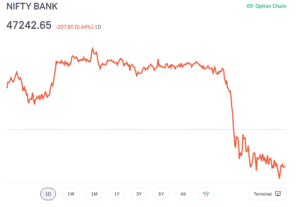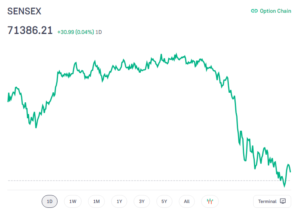Supreme Court seeks govt.’s response on plea against Places of Worship Act
The Supreme Court has asked the government to respond to a plea challenging the Places of Worship Act enacted in 1991.
A notice is issued by a Bench led by Chief Justice of India Sharad A. Bobde to the Union Ministries of Home, Law and Culture on a plea filed by advocate Ashwini Kumar Upadhyay against various provisions of the Places of Worship (Special Provisions) Act of 1991.
The petition said Sections of the Act that dealt with the bar on legal claims were against the principles of secularism.
About the law
It was passed in 1991 by the P V Narasimha Rao-led Congress government. The law seeks to maintain the “religious character” of places of worship as it was in 1947 except law Ram Janmabhoomi-Babri Masjid dispute case that was already in court. The law was brought in at the peak of the Ram Mandir movement after one year before the demolition of the Babri Masjid.
Home Minister S B Chavan in introducing the law said in the Parliament thet it was adopted to curb the communal tension.
About the issue
As discussed above a petition has been filed in the court saying about the law as “arbitrary, irrational and retrospective”.
The cut-off date that is 15 August, 197 as per the law bars Hindus, Jains, Buddhists, and Sikhs from approaching courts to “re-claim” their places of worship which were “invaded” and “encroached” upon by “fundamentalist barbaric invaders”.
Aim of the Act
The religious character of a place of worship shall continue to be the same as it was on 15 August, 1947.
No person shall convert any sort of place of worship of any religious denomination into one of a different denomination or section.
It also says that all suits, appeals or any other proceedings related to converting the character of a place of worship which are pending before any court or authority on 15 August, 1947 will abate as soon as tha law comes into force. Any other legal proceedings could not be instituted.
Odisha Farmer’s Solar Car Gets Thumbs-Up Online
An Odisha farmer gained attention of people on social media by generating electric four-wheeler that runs on a solar powered battery.
Sushil Aggarwal from Odisha’s Mayurbhanj district had built a four-wheeler powered by an 850 Watts motor and 100 Ah/54 Volts of battery.
After fully charged the vehicle can travel up to 300 km. He told that he had built this car inside a workshop at his home during the COVID-19 lockdown.
He told that the solar-powered battery took around 8 and a half hours to be fully charged. He further stated that “It is a slow charging battery. Such batteries have a long life, it will last 10 years.”
All the work on his vehicle including motor winding, electrical fitting and chassis work were done in my workshop with the help of two other mechanics and a friend who advised me on electric works,” he added.
What are solar cars?
They are powered by electricity through the use of solar energy. Sun’s energy is directly converted into electrical energy by the Photovoltaic (PV) cells.
Benefits are:
– Fossil fuel will be used in less.
– Solar energy is free.
– It does not cause pollution
– It will never run out, etc.
Some limitations are:
– You will get solar power during the day and less on cloudy days.
– It has been seen that solar equipments are expensive.
– To store solar energy, expensive batteries are needed for cars to be able to run in night, etc.
First project Genome Mapping in Indian Ocean will be launched
In the Indian Ocean, the National Institute of Oceanography (NIO) will launch the first-of-its-kind project of Genome Mapping.
Indian Ocean covers about 20% of the Earths’s water surface and so is the third largest water bocy in the world.
Its objective is to bather samples of genome mapping of microorganisms in the Indian Ocean.
It is also necessary to understand the biochemistry and the response of the Ocean to climate change, nutrient stress and increasing pollution.
The cost of the project and duration is Rs 25 crore and will take around three years to complete.
What is Genome Collection?
Samples will be collected by the researchers from several stretches of the ocean at an average depth of about 5 km.
It is just like gene mapping whish is carried out on blood samples collected from humans, the scientists will map these in the bacteria, microbes found in the ocean.
Deoxyribose Nucleic Acid (DNA) and Ribonucleic Acid (RNA) mapping shows the nutrients present in them and also those lacking in various parts of the ocean.
Benefits are:
– It will help in understanding ecosystem.
– It will understand factors causing change.
– It will help in identifying Mineral Concentration.
Human benefits are:
It will benefit the human in the future in the large pool of RNA, DNA library of the oceans that will be utilized for using the Indian Ocean.
It also increase the Biotechnology application and optimize the conservation efforts.
What is Genome Mapping?
When a specific gene is assigned or located into a particular region of a chromosome and determined the location of and relative distances between genes on the chromosome.
Types of maps are:
- Linkage maps
- Physical maps
Ultimate Battle Founder- An Online eSports Platform
Founder of Ultimate Battle is Tarun Gupta. It is an online eSports platform where gamers can test their mettle against others without paying a fee. India is still small in this segment, gamers need platforms that can give them competitive exposure to improve their skills.
Therefore, Ultimate Battle invites and encourages players to try popular eSports titles of all kinds against other players. It is a complete product of India and it does not charge players money to participate in competitive gaming through the platform.
eSports titles of today and tomorrow
Ultimate Battle consists of PC gaming titles like DOTA 2, FIFA 20, CS:GO (Counter Strike: Global Offensive) and the PC version of PUBG. Also, mobile titles like Garena Free Fire and Doodle Army 2: Mini Militia.
According to Tarun Gupta, “With Ultimate Battle, our vision was to bring eSports to the forefront, organise events and celebrate gaming in all its glory.” He also added that “the platform also serves as a go-to platform to kickstart one’s career in the competitive circuit. All the eSports athletes will get essential exposure and a platform where they can enhance their tactical skills, strategies & coordination”.
This platform provides players multiple avenues to win rewards or recognitions in the form of eSports Tournaments. Rewards are in the form of cash prizes and ‘UB Coins’. These coins that players win are then redeemable as in game items, Google play credits, merchandise and more.
He also said that the involvement of upcoming technologies like AR and VR and their role in shaping the future of eSports. Hopefully in the near future VR-based competitive games will be developed and hit the mainstream.








